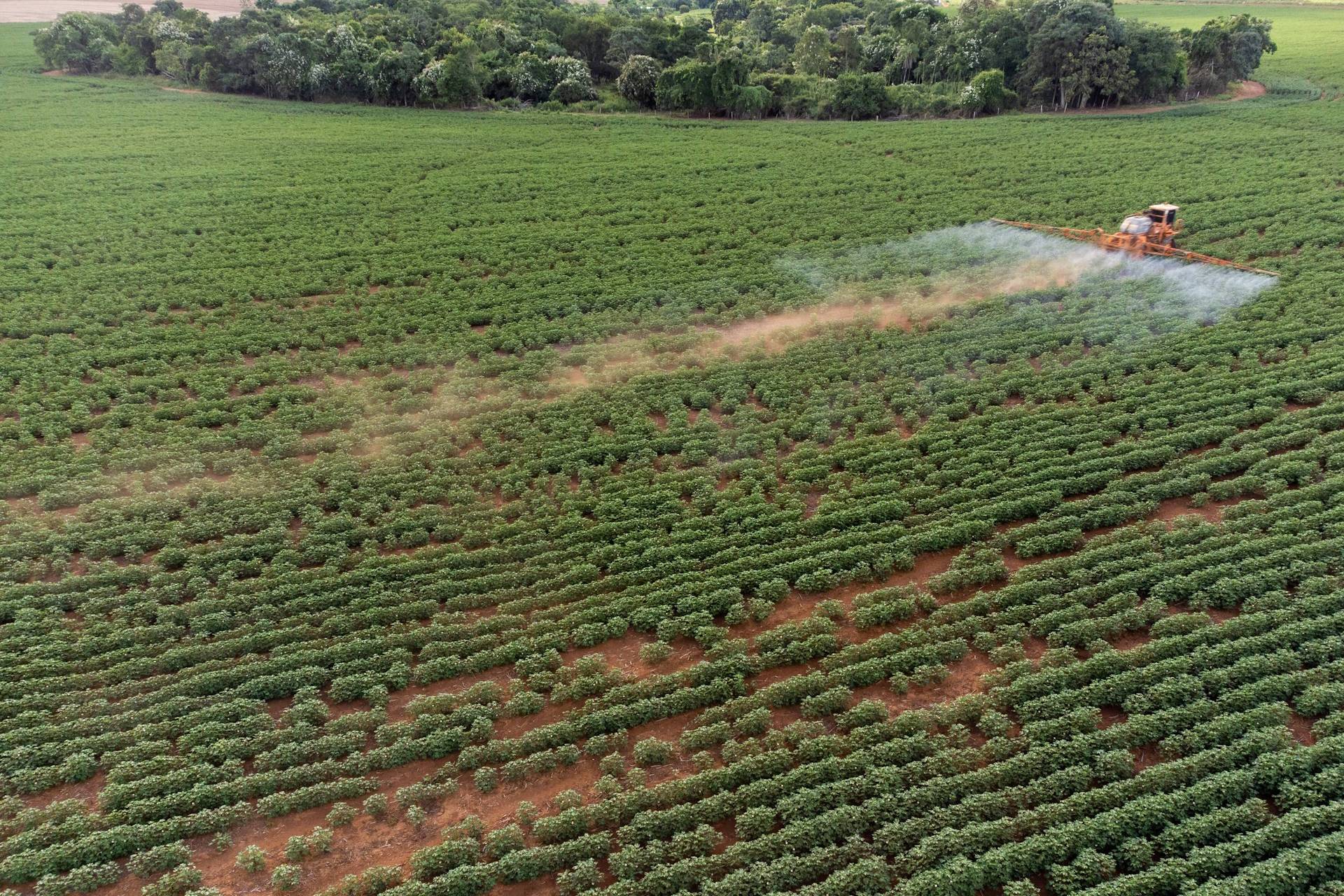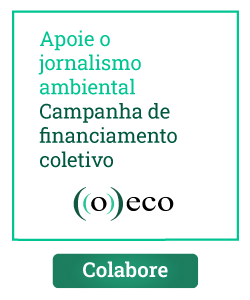A scientific study reveals even Brazil’s protected areas are contaminated by agrotoxins. Researchers warn that reducing and controlling the use of these toxic chemicals is urgent. Yet, regulations protecting both people and natural environments remain under attack by agribusiness interests.
Located across Rio de Janeiro and Minas Gerais states, Itatiaia and Serra dos Órgãos rank among Brazil’s first national parks. Established in the 1930s, they were created to safeguard forests, waterways, and biodiversity in the Atlantic Forest, a biome that stretches inland from the coast.
These conservation areas — home to unique wildlife, plants, trails, mountains, waterfalls, and other breathtaking landscapes — drew nearly 360,000 Brazilian and foreign visitors last year alone, according to data from a Federal Government’s environmental agency.
Yet, even these natural and touristic treasures have been poisoned. Without the work of Brazilian and international scientists, this contamination would have remained hidden. Their study, published in the journal Environmental Pollution, reveals that lakes and wetland sediments in these parks contain 17 different agrotoxins.
“The sheer diversity of chemicals is what’s most alarming”, emphasizes Cláudio Taveira Parente, a biophysics PhD and co-author of the study, who heads the Olaf Malm Environmental Studies Laboratory at the Federal University of Rio de Janeiro (UFRJ).
Many of these agrotoxins are globally banned due to risks to human health and ecosystems, yet some remain approved in Brazil. The detected chemicals include herbicides, insecticides, fungicides, and miticides used in monocultures like cotton, soy, corn, tomatoes, beans, sugarcane, oranges, apples, and lemons.
The highest concentrations found in the two national parks were the toxic compounds chlorpyrifos, disulfoton, diuron, carbaryl, and carbendazim. The latter of which indeed was banned nationwide by Brazil’s health regulatory agency (Anvisa) in 2022.
“We’re using poisons outlawed in countries that import our commodities”, notes Lucas Ferrante de Faria, an ecology PhD from the National Institute for Amazon Research (Inpa), who has studied agribusiness impacts on people and biodiversity for over 15 years.

Even more alarming, the study by scientists from Brazil, the Czech Republic, and Chile reveals that the agrotoxins levels detected in these two national parks pose risks to both humans and biodiversity.
“Aquatic life is most threatened because these chemicals persist in the environment”, warns Cláudio Parente (UFRJ). “Plants and animals in these lakes and wetlands feed other species”, he adds. This raises concerns about contamination spreading through the food chain.
However, people and wildlife may suffer similar effects from exposure to these agrotoxins, including miscarriages, fetal deformities, genetic mutations, cancer, and degenerative diseases like Parkinson’s, notes Lucas Ferrante, also researcher at the University of São Paulo (USP) and the Federal University of Amazonas (UFAM).
“Local extinctions of fauna, flora, and pollinators—such as bees, crucial for crops like melons, watermelons, and passionfruit—could also occur”, he points out. “Ironically, agribusiness itself is harmed by its own agrotoxins”.
Created in June 1937 and November 1939 respectively, Itatiaia and Serra dos Órgãos, alongside Iguaçu National Park (January 1939), were the first three Brazilian national parks.
The study “Occurrence of commonly used agrotoxins in lake sediment cores and peat bogs in untouched mountainous areas of Brazilian national parks” is the doctoral thesis of researcher Patrícia César Gonçalves Pereira at UFRJ.
It also reveals that agrotoxins have also contaminated other national parks such as Yosemite, Sequoia, Glacier and Rocky Mountain (USA), and Kibale (Uganda, Africa).
Traveling poisons
Geographic and climatic factors — such as higher altitudes and lower average temperatures — trap agrotoxins and other pollutants in supposedly isolated areas like Itatiaia and Serra dos Órgãos national parks, in Brazil’s Southeast.
“Mountainous regions like these act as natural traps for these substances”, explains Cláudio Parente (UFRJ). “We expect this to occur in other conservation units across the country”.
Despite this, it is almost impossible to pinpoint where the poisons that are deposited and threaten regions and species that should be protected from the impacts of agribusiness have come from. However, some threads can be pulled.

MapBiomas is a Brazilian platform that monitors changes in land and water use. Its data reveals increasing agrotoxins-dependent cultivation of soy, coffee, pastures, and silviculture in municipalities housing both national parks – including Itatiaia, Resende, Teresópolis, Petrópolis, Magé, and Guapimirim in Rio de Janeiro, plus Bocaina de Minas and Itamonte in Minas Gerais.
Otherwise, the contamination may originate much farther away. The study published in Environmental Pollution notes that wind can carry chemicals like chlorpyrifos over 400 kilometers (250 miles) from application sites.
Even worse, research by the University of Campinas (Unicamp) in Brazil has detected agrotoxins in rainwater over the municipalities of São Paulo, Brotas and Campinas.
The analyses show that chemical concentrations correlate directly with the area of cultivation, which covers almost 50% of Campinas‘ 795 km², 30% of Brotas’ 1,101 km² and 7% of São Paulo’s 1,521 km².
“Rain after long droughts ‘washes the atmosphere’ often carrying high pollutant loads”, explains Cláudio Parente, a UFRJ biophysics PhD. He’s part of a team that for over a decade has studied chemical pollution in protected areas, particularly high-altitude regions.
Their work found polycyclic aromatic hydrocarbons (PAHs) – from wildfires, cigarettes, or petroleum – in São Joaquim (Santa Catarina state) and Itatiaia national parks, compounds even the Federal Government acknowledges harm human and animal health.
These findings would emphasise the urgent need to reduce agrotoxins use and adopt organic, biodegradable or less persistent alternatives – a monumental challenge given current agribusiness practices in Brazil.

Falling further behind
The study published in Environmental Pollution highlights that Brazil has been the world’s largest agrotoxins market since 2011. Its annual consumption now exceeds 700,000 metric tons — enough to fill at least 280 Olympic-sized swimming pools. This surpasses the second-largest user, the United States, by over 260,000 metric tons.
Beyond the staggering volume of agrotoxins used, the rollback of protective regulations raises the risk of severe environmental and public health harm. A recent example comes from Mato Grosso state, one of Brazil’s largest agribusiness hubs.
Turning a blind eye to scientific and NGO warnings, its deputies have approved the application of agrotoxins even near inhabited areas and water sources, in the case of small properties. For medium and large farms, the distance goes from 25 metres to 90 metres (82–295 ft), say civil organisations.
Previously, the minimum safe distance was 150 metres to 300 metres (492 – 984 ft) from towns, villages, neighborhoods, and water catchment zones. Agribusiness advocates claimed the old rules hurt the economy by failing to control crop pests.
“The previous buffer zones were already inadequate to protect water, ecosystems, and people”, says Lucas Ferrante de Faria, a researcher at the University of São Paulo (USP) and the Federal University of Amazonas (UFAM). “Now we’ll see spraying even closer to schools”.
Mato Grosso leads Brazil in agrotoxins use, with 170 million liters (45 million gallons) consumed in 2023 alone.

Approved under emergency procedures and with only three opposing votes — from the state deputies Wilson Santos (PSD), Lúdio Cabral (PL), and Valdir Barranco (PL) — the law will face legal challenges even if signed by Governor Mauro Mendes (União Brasil).
For the legal advisor at Mato Grosso’s Environmental Observatory (Observa/MT), Edilene Amaral, the move proves that “agribusiness profits consistently override human and environmental rights”. “This will be a disaster”, she warns.
In response, civil society groups and researchers vow to take the fight to prosecutors and courts, aiming to reverse what they call “one of the year’s worst regulatory rollbacks”.
“If the governor doesn’t veto this, he and the legislature will be responsible for poisoning their own constituents — including those who elected them”, says Lucas Ferrante (USP/UFAM).
The scientist also predicts economic fallout. “International buyers may reconsider imports from Mato Grosso and Brazil, as they can’t ignore violations of environmental and Indigenous rights. Agribusiness isn’t ‘pop’—it spares no one”.
Easing restrictions on agrotoxins imports, production, and use is a perennial goal for agribusiness lobbies in Congress and state legislatures. Just in January, Brazil greenlit 44 new chemical agrotoxins — including substances banned elsewhere.
This story was originally published in Portuguese. The translation to English was done with the assistance of Artificial Intelligence, with final review by a human. For this story, the review was done by the reporter Aldem Bourscheit.
Leia também

USAID shutdown threatens at least R$ 84 million in environmental projects in Brazil
Six of the top 10 Brazilian beneficiaries in 2024 from the American agency are projects related to the environment →

Family of black lion tamarins receives a new home to avoid local extinction
This population reinforcement aims to prevent the disappearance of primates in a remaining fragment of the Atlantic Forest and protect, with them, their unique genetics →

Water canals threaten global wildlife
Scientists highlight the greatest impacts and how to curb the killing to avoid harming global wildlife conservation →







